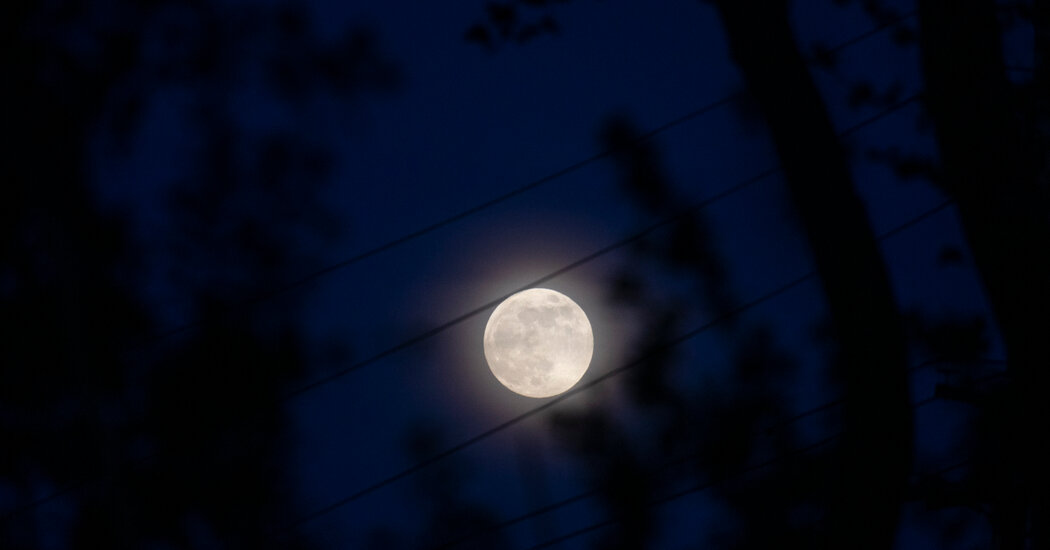Sometimes, the moon seems to move in mysterious ways.
It’s mostly circles and ovals, depending on your perspective. But there is also something else — a so-called wobble — animating those rotations and revolutions. According to a study published last week, the phenomenon is expected to lead to more flooding here on Earth in the middle of the next decade.
While that may sound alarming, the wobble is nothing new. It is a regular oscillation that humans have known about for centuries, and it is one of many factors that can either exacerbate rising sea levels or counteract them, alongside other variables like weather and geography.
The authors of the study, published in the peer-reviewed scientific journal Nature Climate Change, aimed to untangle all of those variables in an effort to improve predictions about the future of floods. Their results underscored a basic fact separate from the movement of the moon: Our oceans are rising because of climate change.
“They’re getting awfully close to the brim in coastal communities due to decades of sea level rise,” said William V. Sweet, an oceanographer with the National Oceanic and Atmospheric Administration and one of the paper’s authors.
Rising temperatures caused by greenhouse gas emissions are not the only cause of higher flood risks, and the report explored the interplay of many variables that push and pull at ocean levels.
“It’s really helping diagnose and disentangle the predictability of the tide and its potential impacts along the coast,” Dr. Sweet said.
But in news media reports about the study, one particular variable seemed to capture outsize attention: the moon wobble. The study warned that we should expect this wobble to heighten high tides in the middle of the 2030s, but it also showed that this prediction does not apply uniformly to every coastline everywhere.
As NASA put it in a news release last week: “There’s nothing new or dangerous about the wobble; it was first reported in 1728. What’s new is how one of the wobble’s effects on the moon’s gravitational pull — the main cause of Earth’s tides — will combine with rising sea levels resulting from the planet’s warming.”
So where, exactly, does this wobble come from?
First, some background: High tides on this planet are caused mostly by the pull of the moon’s gravity on a spinning Earth. On most beaches, you would see two high tides every 24 hours.
The moon also revolves around the Earth about once a month, and that orbit is a little bit tilted. To be more precise, the moon’s orbital plane around the Earth is at an approximate five-degree incline to the Earth’s orbital plane around the sun. (Here are a couple videos to illustrate this.)
Because of that, the path of the moon’s orbit seems to fluctuate over time, completing a full cycle — sometimes referred to as a nodal cycle — every 18.6 years. “It happens on such a slow scale,” said Benjamin D. Hamlington, a co-author of the paper who leads the Sea Level Change Team at NASA. “I think ‘precession’ is a more specific word than wobble.”
At certain points along the cycle, the moon’s gravitational pull comes from such an angle that it yanks one of the day’s two high tides a little bit higher, at the expense of the other. This does not mean that the moon itself is wobbling, nor that its gravity is necessarily pulling at our oceans any more or less than usual.
“The emphasis on the nodal cycle is a little bit different from the message we were trying to convey,” Dr. Hamlington said. But he added that the phenomenon was worth paying attention to.
High-tide flooding related to climate change is expected to break records with increasing frequency over the next decade, and people who want to accurately forecast that risk have to work with a lot of noisy data, including weather patterns, astronomical events and regional tidal variation.
The moon wobble is part of that noise, but it has always maintained its own slow, steady rhythm.
“It’s just acting in the background as sea levels rise,” said Brian McNoldy, a senior research associate at the University of Miami’s Rosenstiel School of Marine and Atmospheric Science.
“During its most rapid upward phase, it acts to enhance the effective sea level, and during its most rapid downward phase, like we’re in now, it acts to suppress the effective sea level,” said Mr. McNoldy, who has written about the lunar nodal cycle but was not a part of the Nature study. “It is not part of sea level rise projections, because it’s not sea level rise; it’s just an oscillation.”
Other variables aside — and speaking very generally, since every region is different — the effect of the wobble could cause high tide levels at a beach to oscillate by one or two inches over the course of its long cycle.
That may sound small. But in certain situations, it can matter quite a bit.
“It just kind of raises the baseline,” said Philip R. Thompson, the lead author of the study and the director of the Sea Level Center at the University of Hawaii. “And the more your baseline is raised, the smaller weather event you need to cause a flooding event.”
Understanding that baseline is important even when we are in the phases of the nodal cycle that would seem to counteract rising sea levels, which is what’s happening now.
“If we know what’s going on, then we shouldn’t be complacent,” Dr. Thompson said. “It’s important to realize that at the mid-2030s point, where the switch flips and the natural cycle seems to amplify the rate of sea level rise, then we are going to see a rapid change.”
Source: Read Full Article
